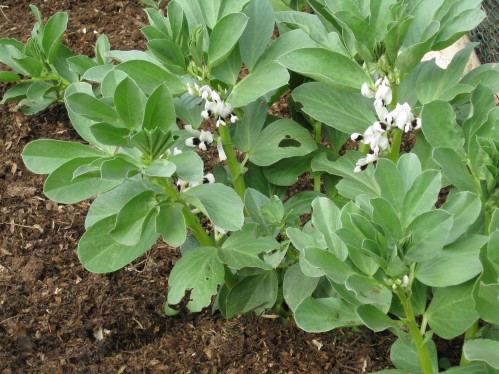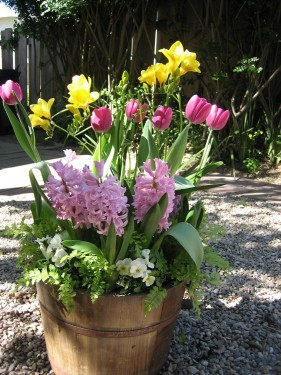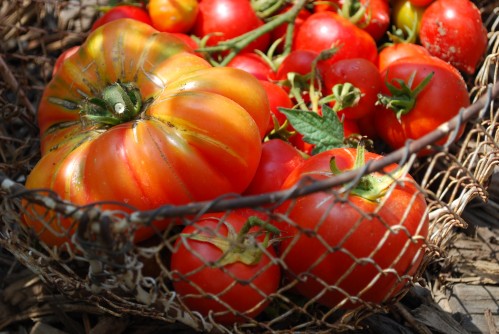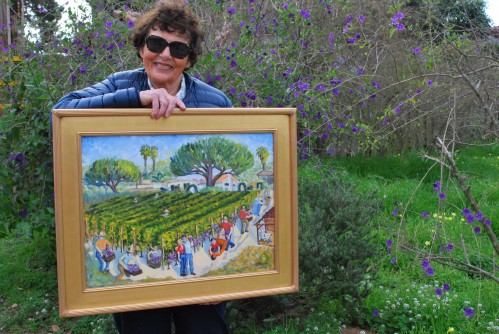 Most of you know Pat Welsh for her incredibly well-written garden books, and the fact that she is a writer, speaker, and garden guru. Did you know, however, she is also a very gifted and talented painter. Her painting is a passion. My husband and I absolutely adore Pat, and adore her painting style.
Most of you know Pat Welsh for her incredibly well-written garden books, and the fact that she is a writer, speaker, and garden guru. Did you know, however, she is also a very gifted and talented painter. Her painting is a passion. My husband and I absolutely adore Pat, and adore her painting style.
A few years back we approached Pat about painting "our little hamlet" here at Domaine de Manion, our home and backyard vineyard. Fortunately, she was very interested in our proposed subject, and soon Pat's painting of our home and vineyard took on a life of its own. Pat did on site visits, sketches, and borrowed photos we had taken to begin her vision of the painting. Despite her very busy schedule, she persevered and enjoyed time for painting.
Her proposed composition was exactly what we were hoping for, a beautiful, yet simple depiction of our first grape harvest in 2008. Pat focused her painting of our vineyard from our lower south west corner of our property. Her painting sweeps upward over our beautiful syrah vineyard to our home on top of the hill. She was able to capture our enthusiastic friends helping in the harvest, J.Lo our beloved chicken and chicken coop, and the whole essence and excitement of our first harvest. My husband, John, and I, are depicted center-front, holding on to this moment.
We wanted something very special to remember and commemorate our first harvest, and all of our hard work which brought us to this point in time. We feel so fortunate and honored to have Pat Welsh's beautiful painting to capture our memories. Many thanks Pat, your painting is incredible.
Please comment on little celebrations in your life that have big meaning. Please share if you have had a chance to delve into Pat Welsh's new book.
Thank You for Visiting VGG Sponsors!
San Diego Horticultural Society announces its Spring Garden Tour, Saturday March 13, 2010. Tickets are $15/members, $20/non-members. To purchase tickets and more detailed information, please go to www.SanDiegoHorticulturalSociety.org

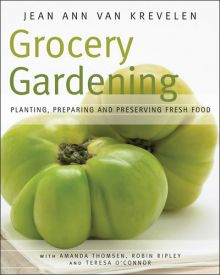
 by Jean Ann Van Krevelen, with co-authors Amanda Thomsen, Robin Ripley, and Teresa O'Connor. Grocery Gardening is paperback, lists for $19.95, and is published by
by Jean Ann Van Krevelen, with co-authors Amanda Thomsen, Robin Ripley, and Teresa O'Connor. Grocery Gardening is paperback, lists for $19.95, and is published by 

